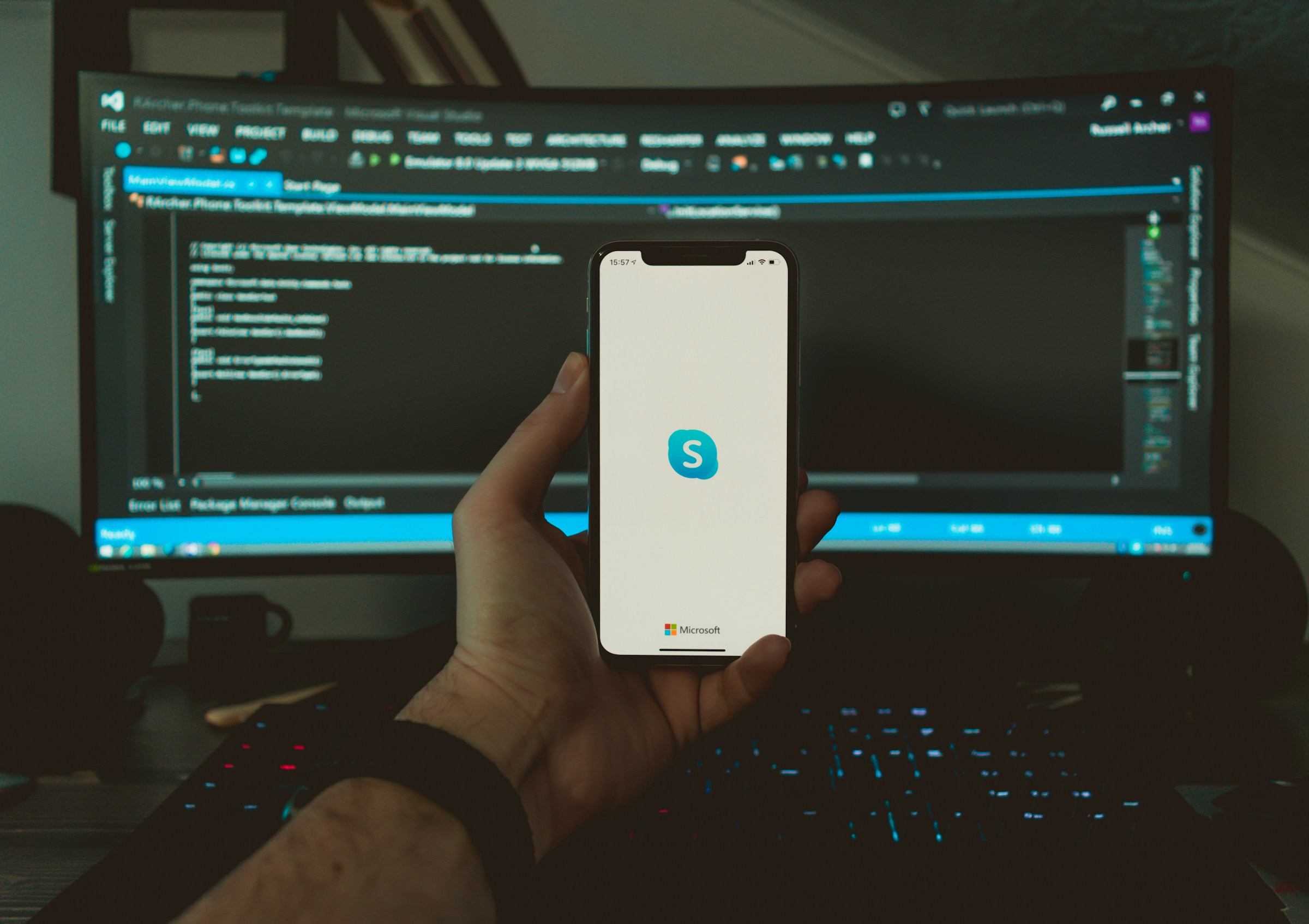Businesses in the digital economy of 2025 treat mobile apps as their fundamental operations instead of simple extensions. Organizations now view developing separate iOS and Android native applications as inefficient and costly. The digital transformation has led startups and enterprises to select cross-platform mobile app development because it enhances their product strategy.
Businesses today leverage experienced cross-platform mobile app development company to create advanced high-performance applications that support both devices and operating systems with a single shared codebase. The industry-wide adoption of cross platform app development has made it the preferred method for building MVPs and enterprise-level applications.
This paper examines the most successful mobile application development frameworks of 2025 through evaluation of their operational features and performance alongside community engagement along with the reasons why major corporations including Facebook and BMW and Alibaba maintain significant investments in cross-platform mobile development.

The Rise of Cross Platform Mobile Development
What driving factors explain the widespread adoption of cross platform mobile application development?
The Stack Overflow developer survey indicates that 62% of developers choose cross platform mobile development tools instead of native SDKs. Research from Gartner shows that 80% of consumer and enterprise mobile applications will use cross platform development frameworks by the end of 2025.
The growth of this trend can be attributed to several factors.
- Developing applications once allows deployment across every platform. The shortened development process enables organizations to speed up their product launches.
- The practice of sharing platform code reduces development expenses by approximately 50% while maintaining platform compatibility.
- The unified design systems and native-like UI components provided by frameworks enable simultaneous bug fixes and update releases across platforms.
- The combination of frameworks enables developers to create uniform user interfaces through unified design systems while providing native-looking user interface elements.
Framework Overviews
Flutter: Google’s High-Performance Contender
Among the many cross platform development frameworks Flutter has emerged as the most impactful framework during the last few years. The Google-developed Flutter platform operates with Dart programming language support to advance its capabilities in 2025.
The platform distinguishes itself through its direct native ARM code compilation and Skia rendering engine operations. Developers can construct powerful applications with exceptional responsive user interfaces using this approach. Development speeds up through hot reload functionality which also makes the process more user-friendly.
Flutter’s usage has skyrocketed, with GitHub stars and contributions doubling since 2023. The companies Alibaba together with BMW and eBay and Google Ads utilize Flutter for developing mobile solutions at scale.
Through its expansion of Flutter Web and Flutter Desktop features developers can now build applications that function uniformly on mobile devices as well as web and desktop platforms which represents a unified multi-platform strategy.
React Native: JavaScript’s Mobile Powerhouse
Meta (Facebook) maintains React Native as a top choice for 2025 cross platform mobile development despite its origins from Facebook. The framework uses JavaScript as its programming language which developers throughout the world already know and use extensively.
The React Native platform enables developers to connect JavaScript code with native modules which produces high-performance results through JavaScript’s adaptable nature. Developers benefit from testing real-time changes in their applications because of the “fast refresh” feature.
The scalability and reliability of React Native can be demonstrated through apps such as Instagram, Facebook, Airbnb and Walmart. The performance and memory usage of applications improves through the combination of third-party libraries that include TypeScript support and the Hermes JavaScript engine.
React Native development demonstrates exceptional strength when project need faster development, less budget and extensive user testing at scale.
Xamarin: The Enterprise Favorite
Xamarin stands as a Microsoft-owned framework which finds its strongest adoption base within enterprises that extensively utilize Microsoft platforms. Through Xamarin developers can create mobile apps with native API access using C# and.NET to share business logic.
The Microsoft investment in.NET MAUI (Multi-platform App UI) has brought new life to Xamarin which now serves as an ideal platform for developing complex enterprise applications during 2025.
Xamarin stands out because it delivers native performance along with secure architecture and tight Azure service integration which suits finance, healthcare and logistics sectors best. The mission-critical applications of UPS and BBC Good Food and Outlook Mobile operate on Xamarin as their framework.
Visual Studio provides a tight integration which simplifies the development lifecycle through its ability to build and debug applications while testing and deploying them automatically.
Ionic: Web Developers’ Gateway to Mobile
The move to mobile app development becomes easier for development teams who already know HTML, CSS and JavaScript when using Ionic as their platform. Ionic stands as the main cross platform mobile app development solution for web-first businesses because it uses standard web technologies alongside Angular, React and Vue frameworks.
The hybrid nature of Ionic sets it apart from other platforms. The system enables developers to develop code that functions on iOS and Android platforms as well as desktop and web platforms through Progressive Web App deployment. Rapid prototyping along with internal business tool development benefits from this deployment method.
The performance of graphics-intensive apps remains lower than expected yet Ionic has made substantial progress through native plugins and Capacitor which enable access to device features including GPS, camera and push notifications.
Ionic delivers smooth performance to applications like MarketWatch, Sanvello and Diesel especially when speed-to-market matters more than detailed performance optimization.
Unity: Not Just for Games Anymore
The game engine concept defined Unity until it developed its functionality into more than traditional game development capabilities. The 2025 Unity platform now functions as the base for educational applications together with architectural simulation software and healthcare training systems as well as AR/VR experiences.
The main advantage of Unity lies in its ability to generate both 2D and 3D visuals. The platform enables deployment to 25 different platforms which include iOS, Android, macOS, Windows as well as several game consoles. The platform stands unmatched when developers need applications that need dynamic animations alongside interactive simulations and immersive user interfaces.
Cross platform mobile application development becomes possible through Unity because of its versatility as shown by applications such as Pokemon Go and Monument Valley 2 and multiple industrial AR apps.
The heavy runtime of Unity makes it unsuitable for typical business applications even though it excels at creating immersive mobile applications.
Kotlin Multiplatform Mobile (KMM): Shared Logic, Native UI
Kotlin Multiplatform Mobile represents a new entry in 2025 which has started to gain substantial market acceptance from developers. KMM operates with a native-oriented design instead of offering the complete write-once-run-anywhere functionality of Flutter or React Native.
KMM enables developers to maintain business logic consistency across platforms by using Kotlin but requires individual platform-specific UI development through Swift and Jetpack Compose for iOS and Android respectively. The platform enables developers to preserve native design elements while minimizing duplicate development work.
The hybrid approach of KMM appeals to teams who need to share code yet maintain performance and platform-specific design integrity in their enterprise solutions. Netflix, Philips, and VMware have begun implementing KMM in their enterprise solutions primarily because user experience and native platform feel are vital.
The hybrid approach satisfies teams who need to share code but will not accept any performance losses or compromises in platform design.

2025 Trends in Cross Platform Mobile App Development
1. AI-Enhanced Development Tools
Artificial intelligence has brought revolutionary changes to how mobile app development processes work. The combination of GitHub Copilot with Tabnine and AI-based UI generators speeds up coding alongside debugging and testing operations. The deployment speed and maintenance simplicity of complex applications significantly benefit from intelligent tools in cross platform mobile development.
2. Increased Focus on Developer Experience
Major frameworks dedicate resources to enhance developer tooling through improved compilers as well as error tracing features and hot reload capabilities and component preview functionality. The platform improvements boost market delivery speed while enabling better teamwork between developers who work on front-end and back-end components.
3. Cloud-First Architectures
Most cross platform app development projects now incorporate cloud-native solutions alongside Firebase backends and CI/CD integration capabilities. Standard implementation of cloud functions and push updates and real-time synchronization exists within every framework.
4. AR, VR, and Spatial Computing
The rising popularity of Apple Vision Pro and Meta Quest products leads developers to adopt Unity and Flutter cross platform development frameworks for building AR/VR applications. The upcoming trend will see educational as well as healthcare and gaming mobile applications becoming more immersive.
5. Greater Emphasis on Security and Compliance
The use of cross-platform tools within healthcare and fintech sectors leads to increased adoption of secure SDKs together with compliance modules (e.g., HIPAA, GDPR) and zero-trust architectures.
Final Thoughts: Choosing the Right Framework
Every mobile application framework requires individual selection because there exists no universal solution. The selection of an ideal framework depends on three main factors including development team size and experience along with the need for native performance and speed of development and the complexity level of your application.
- The size and experience of your development team
- The need for native performance versus speed of development
- The level of complexity in your application determines between UI-rich and logic-heavy designs
- Industry-specific requirements (compliance, scalability, offline access)
Working with a professional cross-platform mobile app development company allows businesses to achieve excellent multi-platform app delivery without creating everything from scratch. Through their technical capabilities these experts create optimized applications which deliver scalable performance and high user engagement.
Staying ahead of competition and delivering value to global users will depend on the correct adoption of cross-platform app development strategies during 2025.


